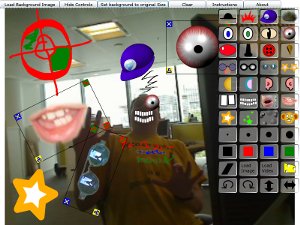


(You can work this out from file but more prone to mistakes, e.g. Number Start End Size Type File system Flagsġ 1048576B 24675839B 23627264B primary boot Sector size (logical/physical): 512B/512B Here parted is printing out the partition table in units B = bytes. You can mount an MBR image easily in userspace, first you need to find the offset, the distance between the start of the image and the start of the volume (think of it as the distance between /dev/sdd and /dev/sdd1) (The partition table starts after that) Note the MBR data is actually only 440 bytes. This is writing 440 bytes of the mbr.bin file to the start of the image file, once. If you forget conv=notrunc it will also overwrite the whole file! (=dont truncate the output file) Use dd instead so you are less likely to get in a muddle, be very careful to make sure 'if' and 'of' are the right way around and the byte size (bs) and count are right! Assuming mounted above with offset, this will put the MBR in the filesystem, not at the beginning! $ cat /usr/lib/syslinux/mbr.bin > /dev/loop0 Last sector, +sectors or +size (2048-48194, default 48194):Ĭhanged system type of partition 1 to 4 (FAT16 /tmp/test.imaĮ.g. Warning: invalid flag 0x0000 of partition table 4 will be corrected by w(rite) Set partition 1 bootable (a), changed the partition type (t) to 04 (FAT16) and wrote it out (w)Įverything but DOS can cope with a start sector of 2048 which is useful for correct disk alignment with 4k sector HDD's or SSD's if your image is ending up on a real disk.ĭevice contains neither a valid DOS partition table, nor Sun, SGI or OSF disklabelīuilding a new DOS disklabel with disk identifier 0x39d2aac8.Ĭhanges will remain in memory only, until you decide to write them.Īfter that, of course, the previous content won't be recoverable.

Now we can partition it with fdisk, I set one new primary partition, accepting the defaults for start and end sector. (I realise its all virtual, but to understand what is going on!)ģ tracks x 16065 sectors / track = 48195 sectorsĥ12 bytes / sector = 48195 x 512 = 24675840 bytes = 24675840/(1024x1024) = 23.53Mb which is ample for the BIOS.Ĭreate the disk, we want 48195 sectors at 512 bytes/sector, so create it in the /tmp/ folder I want 32768 sectors / 16065 sectors per track = 2.0397 tracks.Ĭlearly a track has to be a whole number, so taking the next largest 3. Lets pick a small disk to hold the bios file and the flash utils.ġ6Mb disk = 16x1024x1024 = 16777216 bytesĪt the standard 512 bytes/sector = 16777216/512 = 32768 sectors. choose as the default geometries for a empty image) So I am going to stick with the ~max CHS 'standard' of 255 heads with 63 sectors/track = 255×63 = 16065 sectors/track. The best thing to do is stick to simple geometries/sizes To make anything over 16Mb you are better off using images with an MBR which means you will need a partition table. Larger are normal Hard/SSD disk or partition images.Smallest useful for newer large BIOS flashing.1.3.3 Get image offset to mount on loop device.1.2.3 Get image offset to mount on loop device.Use the GUI to expand the drive to something reasonable, like 128 GB.(If this option is disabled, you need to go back and delete any checkpoints for the VM in the Hyper-V Manager just select the VM and right click the checkpoint in the checkpoint field below.) Use Hyper-V Manager to select the Settings of the Virtual Machine, select the Hard Drive option and Edit under Virtual hard disk.
#Create image of hard drive from ubuntu how to#
However, if this method is used, you may end up with a tiny Ubuntu virtual disk that will not be useful for any serious work and it is less obvious than the initial setup how to increase the size of this disk.
#Create image of hard drive from ubuntu windows 10#
It is quick and easy to use Hyper-V Quick Create to get an Ubuntu virtual machine running on a Windows 10 computer.


 0 kommentar(er)
0 kommentar(er)
